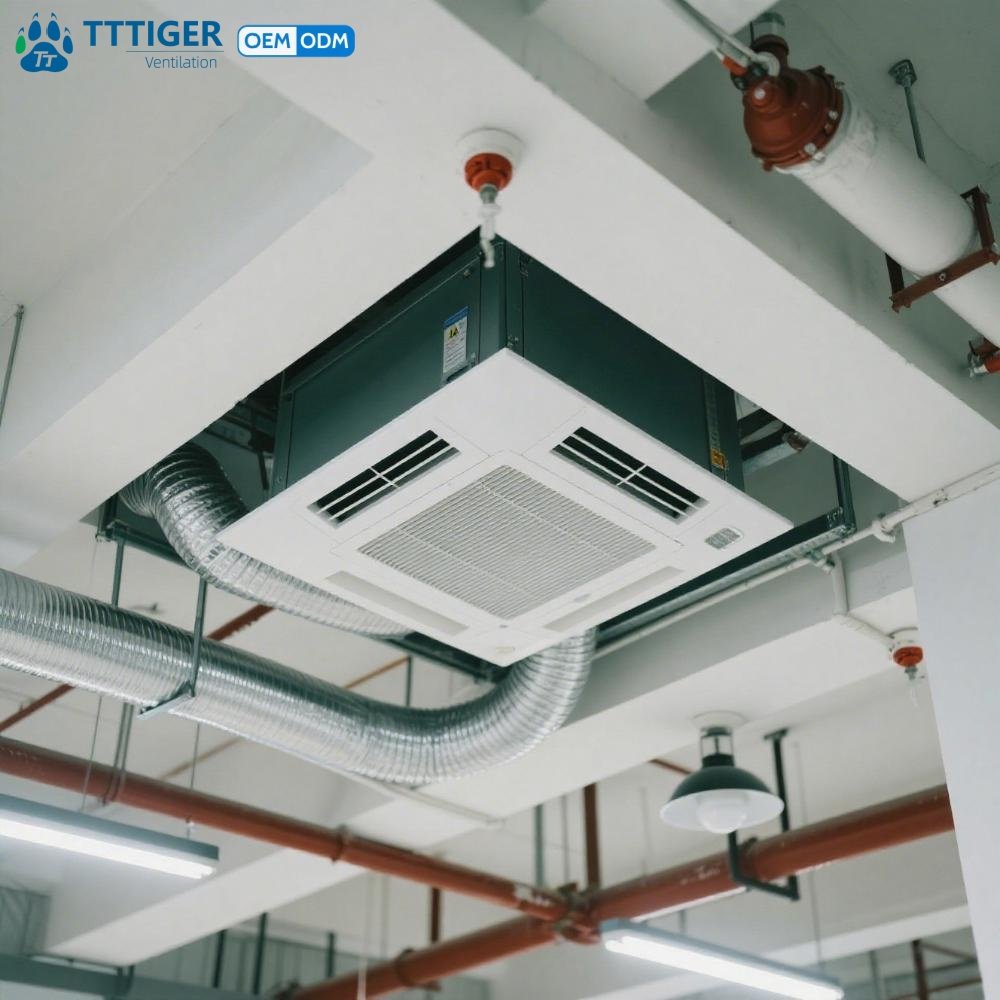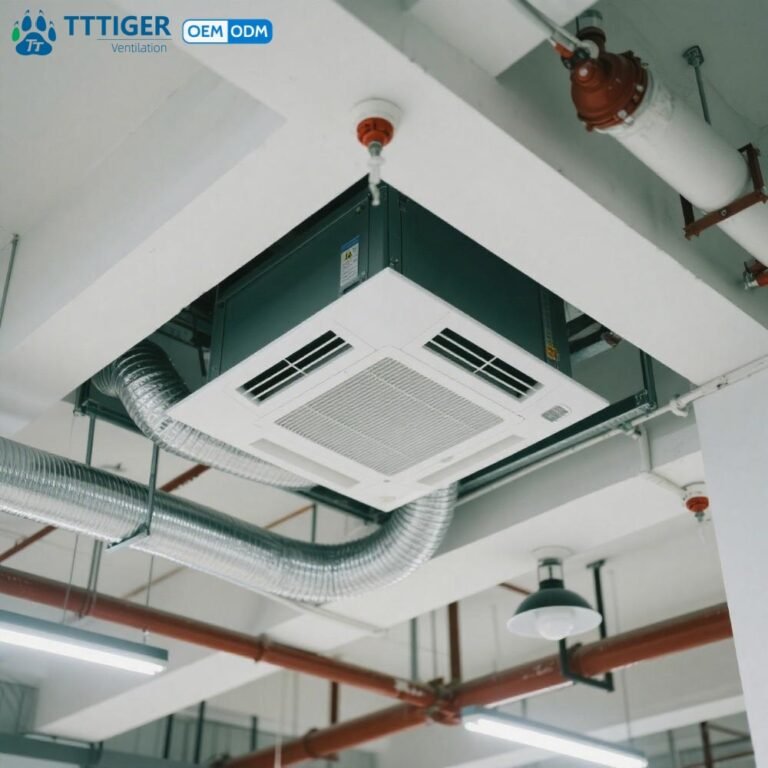
HVAC Ventilation: The Complete Guide to System Design, Benefits & Choosing a Partner
Introduction
When people think of HVAC (Heating, Ventilation, and Air Conditioning), heating and cooling often steal the spotlight. However, the “V” – HVAC ventilation – is arguably the most critical component for indoor air quality (IAQ), health, and comfort. A well-designed ventilation system silently works to ensure the air we breathe indoors is fresh, clean, and safe. This guide delves into the importance of HVAC ventilation, the role of key equipment like industrial exhaust fans, and how to select the right B2B supplier or manufacturer for your project needs.
Why HVAC Ventilation is Essential for Modern Buildings
Ventilation is the process of exchanging indoor air with fresh outdoor air. Its purpose goes far beyond just preventing a stuffy room. An effective HVAC ventilation system is crucial for:
Health and Wellbeing: It dilutes and removes pollutants, including allergens, volatile organic compounds (VOCs), odors, and, most critically, airborne viruses and bacteria. This leads to fewer sick days and improved occupant health.
Moisture Control: Proper ventilation reduces excess humidity, preventing the growth of mold and mildew, which can cause structural damage and respiratory issues.
Comfort and Productivity: Stale, polluted air causes drowsiness and reduces concentration. Fresh air improves cognitive function and overall comfort, boosting productivity in offices and learning in schools.
Regulatory Compliance: Building codes and standards (like ASHRAE) mandate minimum ventilation rates to ensure occupant safety, making a proper system a legal requirement, not just an option.
Key Components of an Effective HVAC Ventilation System
A comprehensive system involves more than just a fan. Key components include:
Air Intakes: Strategic openings that bring fresh, filtered outdoor air into the building.
Air Handling Units (AHUs): The heart of the system, which conditions (filters, heats, cools, and humidifies/dehumidifies) the air before distributing it.
Ductwork: The network of channels that transport air throughout the building.
Exhaust Systems: This is where the industrial exhaust fan plays a starring role. These powerful fans actively expel stale, contaminated, or humid air from specific areas like kitchens, bathrooms, factories, and parking garages, creating negative pressure to ensure pollutants are pulled out and not spread.
The Critical Role of the Industrial Exhaust Fan
Within a broader HVAC ventilation strategy, industrial exhaust fans are the workhorses for targeted air removal. They are designed for heavy-duty, continuous operation and are essential in applications where contaminants are concentrated.
Choosing the right industrial exhaust fan involves considering:
Application: Is it for general space ventilation, fume removal, heat reduction, or moisture control?
Capacity: The fan must be sized correctly based on the volume of the space and the required air changes per hour (ACH).
Static Pressure: It must overcome the resistance of ducts, louvers, and filters.
Construction: Materials must be chosen to withstand the environment (e.g., stainless steel for corrosive atmospheres).
OEM vs. ODM Manufacturing: Which is Right for Your Business?
For businesses integrating ventilation solutions, understanding manufacturing partnerships is key.
OEM Manufacturer (Original Equipment Manufacturer): An OEM produces equipment based on your designs and specifications. If you have a unique product requirement or a strong brand, you partner with an OEM to bring your precise vision to life.
ODM Manufacturer (Original Design Manufacturer): An ODM designs and manufactures a product that you can then brand and sell. This is ideal if you want to launch a product line quickly without investing in extensive R&D. You get a proven, high-quality product with your label.
A top-tier B2B supplier will often offer both options, providing flexibility for clients with different business models.
TTTIGER: Your Expert B2B Partner in HVAC Ventilation
For businesses seeking reliable, high-performance ventilation components and expert manufacturing partnerships, TTTIGER stands out as a leader. Here’s why:
Comprehensive Product Range: TTTIGER specializes in robust industrial exhaust fans designed for efficiency and durability, perfectly suited for integration into larger HVAC ventilation systems.
Flexible Manufacturing Options: As both a skilled OEM and ODM manufacturer, TTTIGER offers unparalleled flexibility. Whether you need custom-engineered fans for a specific project (OEM) or want to source high-quality, ready-to-brand products (ODM), they provide scalable solutions.
B2B Focus: TTTIGER is built to serve businesses, offering competitive pricing, volume discounts, and reliable global supply chain logistics for B2B suppliers and integrators.
Quality and Expertise: With a focus on innovation and rigorous testing, TTTIGER products meet high standards of performance and safety, ensuring your ventilation systems are effective and dependable.
Conclusion
A sophisticated HVAC ventilation system is a non-negotiable element of healthy, efficient, and compliant buildings. The selection of critical components, especially industrial exhaust fans, and the choice of a manufacturing partner are decisions that directly impact system performance.
Partnering with an experienced B2B supplier like TTTIGER, which excels as both an OEM and ODM manufacturer, provides the expertise, quality, and flexibility needed to succeed. Whether you’re an engineering firm, a contractor, or a brand looking to expand your lineup, TTTIGER can be the foundation of your ventilation solutions.
Upgrade your ventilation strategy. Contact TTTIGER today to discuss your OEM and ODM requirements.

